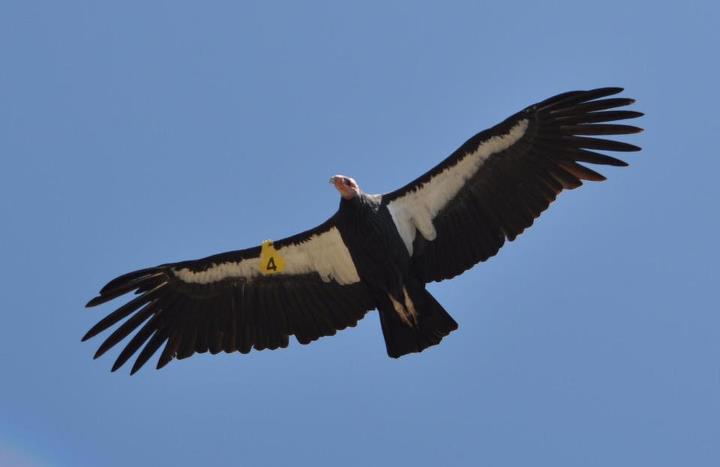
California Condor
This blog is about magnificent birds of the west. Most of the birds I have seen, but some I haven’t. This one, the California Condor, is one I have seen, so let’s get started! Have you ever heard of a California Condor or seen one? If you haven’t, then you are on the right blog to learn about this bird.
The California Condor is an amazing bird. It has a wingspan over 10 and a half feet! That is one way to identify the bird. If it is super far away, and you can’t tell the size of it, you look at how the bird flies. If it is flapping its wings, gliding, and its wings are in a V-shape, and it is flying very wobbly, then that is a Turkey Vulture. But, if you see something that looks like an aircraft carrier, with no wobbling, and flying smoothly, then you’ve got yourself a California Condor. If you see one flying close to you, and you can see the underside of the bird, look at the white on the underside of the wing. If it is on the leading part of the wing, it is a California Condor, but if you see the white is on the backside of the wing, it is a Turkey Vulture.
California Condors are scavengers so they eat dead animals. A trick the Condors use to find dead meat is to look for Turkey Vultures, another type of scavenger. Turkey Vultures have a really good sense of smell so they can smell dead meat, but they don’t have good vision. Condors don’t have a good sense of smell, but they have good vision. So the condors look for a kennel of circling Turkey Vultures in an area, which means there is usually dead animal or meat. The condors will glide down to have a feast.
The California Condors almost went extinct. The main reason why they almost died out is because of lead poisoning. Lead poisoning happens when a hunter shoots a deer or any other animal with a lead bullet. The bullet shatters and all of the pieces of lead spread throughout the body. The hunters leave some of the flesh out for any animals to eat, but the flesh has poisonous lead in it, so when the condors eat it, they die. Some people are trying to help the California Condors by using copper bullets instead of lead bullets because copper bullets don’t shatter, so they don’t kill anymore condors.
The last wild bird was captured, April 19, 1987, in Kern County California. Scientists have been researching all about Condors by having a tagging program. They tag wild and captive bred Condors. At the Grand Canyon, we saw a biologist who was monitoring California Condor activity. He had a radio transmitter that he moved around from side to side, which was transmitting to see if he could pick up the beep of a condor. Each condor has a wing mounted number tag, and wing mounted radio transmitters. He has many to chose from, and he picks one tag to try, and if they’re is a beep, that means there is a California Condor in the direction that he is pointing towards. If not, he will move to another bird and do the same thing. I talked to the biologist and he showed me how to use the radio monitor. I heard a slow beep, which meant that the condor hadn’t moved in a long time, so it was either sitting or dead. If the beep was fast, it means the condor is flying or had just been moving a lot.
California condors can soar for long periods without flapping their wings. They take advantage of updrafts produced when the wind blows over hills and mountain ridges or make use of rising columns of warm air called “thermals. When I was driving down the coast of California with my family, we saw a California Condor flying with Turkey Vultures near the ocean. I have a really good photo of one right next to a Turkey Vulture, so you can see the size difference, and there is a big difference!
California Condors know that sea lions live on the rocks and beaches. They look for dead sea lions, who have died because of fighting or old age. Some places I recommend looking for the condors are at the Grand Canyon National Park, along the Big Sur coast of California near sea lion colonies, and Pinnacles National Park.
